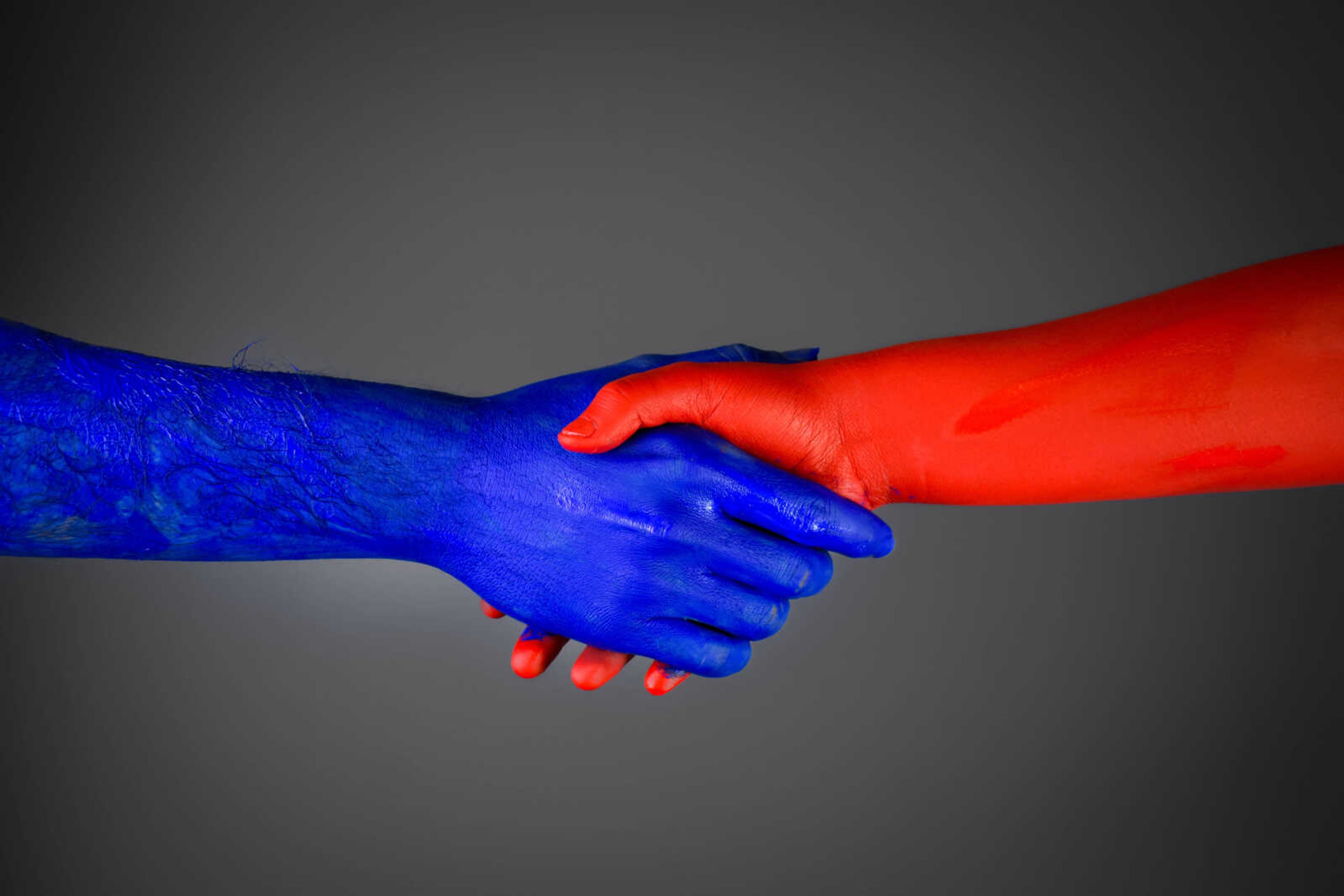Another take on textiles
NEW YORK -- You hear "textiles," you think T-shirts. Or maybe you think trade because of the battle between U.S. and Chinese clothing manufacturers. If you're a fashionista, textiles might bring to mind a luxe embroidered fabric used by Oscar de la Renta or a sassy print from Betsey Johnson...
NEW YORK -- You hear "textiles," you think T-shirts. Or maybe you think trade because of the battle between U.S. and Chinese clothing manufacturers. If you're a fashionista, textiles might bring to mind a luxe embroidered fabric used by Oscar de la Renta or a sassy print from Betsey Johnson.
Even then, you're limiting yourself: There's actually an exciting world of textiles beyond apparel that you probably don't know about. And the Smithsonian's Cooper-Hewitt, National Design Museum is prepared to make the introduction.
The museum's "Extreme Textiles: Designing for High Performance" includes 150 textile applications from the worlds of architecture, medicine, transportation, aerospace and the environment, ranging from the air bags used to protect Mars Exploration Rovers and knitted bags to help people suffering from enlarged hearts.
These aren't textiles that are decorative, though some are visually interesting. Instead, they're fabrics that are high performance, precisely engineered and functional to their core. Most are unfamiliar to the average Joe or Jane -- for now -- but they are already affecting daily life.
Consider the simple woven fabric that reinforces auto and bike tires, which has been in use for over 115 years.
On a recent tour of the exhibit, curator Matilda McQuaid highlights a racing boat that fills a solarium at the mansion-turned-museum. "It's almost all fabric. The hull is made of glass fiber, there's the ropes and the high-performance sail is laminated as one piece," she explains.
Textiles can be as strong as steel and are a whole lot lighter, which is why industries that rely on safety and aerodynamics are particularly interested in fabrics and fibers. The Marlow SuperLine polyester rope, which is 10 inches in diameter, is the world's strongest, holding up to 2,000 tons. It's primary use is on oil rigs.
And even steel can be used as a textile, McQuaid notes, pointing out braided steel used in machinery. "Doesn't it look like jewelry?" she asks.
The exhibit is organized in categories of use: textiles that make things stronger, lighter, faster, smarter and safer.
--STRONGER. The air bag system for the Mars Rovers was developed in 1996 as a low-cost NASA experiment. It's made of Vectran, liquid crystal polymer layers, using the most basic textile technique, the under-over interlacing of threads that's called "weaving."
The air bag inflates five seconds before the craft is to touch down on Mars (after descending at a rate of 250 miles per hour) to protect it from the planet's rocky surface. It bounces 100 feet back up in the air, crashing down several more times before rolling to a stop.
Also on display is a prototype of a lasso to rein in space junk. It's made of braided Zylon, the synthetic fiber used in bulletproof vests that can withstand cuts or splits in individual strands. Ropes are one of the most simple and strong applications of technical textiles, McQuaid says.
--LIGHTER. Imagine lightweight skyscrapers made of carbon fiber and composite materials. Peter Testa has designed such a building that would be woven together as a single structure, rather than assembled out of many pieces, making it less susceptible to the effects of buckling, shifting, gravity and wind. His mock-up of the 40-story tower and its columnless interior are part of the exhibit.
So is a "bird man" flying overhead. It's an example of a detachable wing system, called a Skyray Rigid Wing suit that's made by Alban Geissler and Atair Aerospace. In 2003, Felix Baumgartner used a Skyray to become the first human to cross the English Channel without using any mechanical power, McQuaid says. It's made of carbon fiber and Kevlar, a protective material also used to make HAZMAT suits.
--FASTER. Faster and lighter often go hand in hand, says McQuaid, and there might be no better example than a Formula One racing car. The WilliamsF1 BMW FW26 features a chassis made of a carbon-fiber reinforcement with an epoxy resin. The components are molded by laminating layers of the material onto a form, then applying heat and pressure.
The same technology is applied to professional skiing helmets and boats -- both of which are also included in "Exreme Textiles." You can even take a seat on Kevlar-based benches in a simulated interior of a boat.
--SMARTER. Advancements in embedded technology have put antennas inside vests, and future uses likely will include incorporating GPS, computer and vital signs monitors into apparel. "The military and NASA have been instrumental in the research of these experimental 'smarter' fibers," McQuaid says. "The military wants to bring soldiers' uniforms down from 120 pounds to 40, and this is how they're going to do it."
Embedded technology already has some civilian uses, too. The Portland Mountain Rescue and Mount Hood Meadows Ski Patrol in Oregon also use a modified vest by Nike to stay in contact with the base camp.
Medical uses of textiles range from a device that allows a doctor to remodel a faulty heart valve while retaining enough flexibility to allow the valve to close during the contraction of the heart and the knitted heart bag, which can contain an enlarged heart with a sturdy shell while offering freedom of movement.
At least two "textiles" are natural to the body -- collagen and elastin, important components of skin.
--SAFER. A giant net -- "our ode to Spider-Man," McQuaid says with a laugh -- hangs in a room that's otherwise dominated by space and firefighter gear.
The cut-resistent net is an effective law-enforcement tool because it can trap someone without causing any bodily harm, McQuaid explains. Meanwhile, an oil spill could be contained quickly with a rapid-deploy boom, which can be stored onboard and inflated at a rate of 2,000 feet per hour.
Pete Conrad's space suit from the Skylab mission in 1973 features many of the same protective elements, particularly relating to heat, as a modern firefighter suit. Other spinoffs from the space suit are a UV-blocking suit and a cooling vest, a garment filled with a network of small water-filled tubes to keep the body cool, are used by some athletes, including late race car driver Dale Earnhardt.
"Extreme Textiles" runs through Oct. 30.
Connect with the Southeast Missourian Newsroom:
For corrections to this story or other insights for the editor, click here. To submit a letter to the editor, click here. To learn about the Southeast Missourian’s AI Policy, click here.










